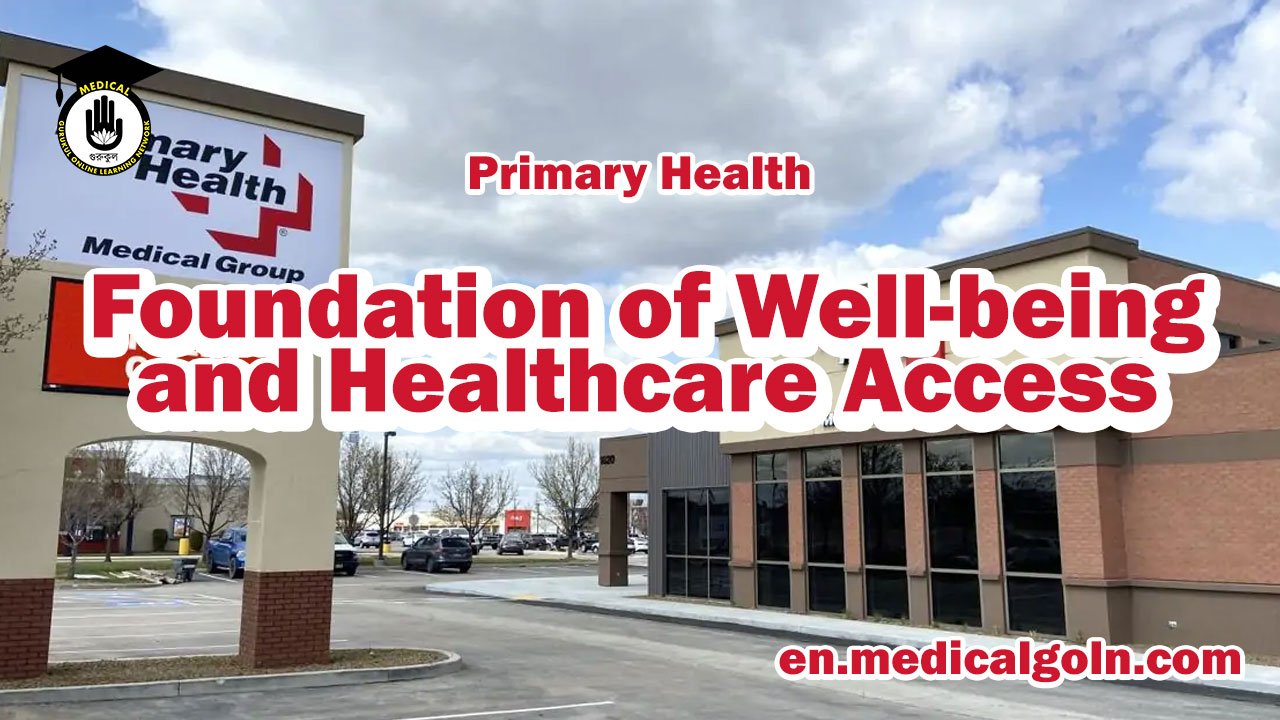Primary health care (PHC) is the cornerstone of a well-functioning healthcare system. It refers to essential health care services that are universally accessible, affordable, and centered on the health needs of individuals, families, and communities. The concept of primary health care goes beyond just treating diseases; it encompasses prevention, education, and the promotion of healthy lifestyles, aiming to improve the overall well-being of individuals. In this article, we will explore the definition, importance, components, and challenges of primary health care.
Primary Health
What is Primary Health Care?
Primary health care is the first point of contact between individuals and the healthcare system. It includes a wide range of services such as health promotion, disease prevention, early diagnosis, treatment, rehabilitation, and palliative care. The goal of PHC is to provide accessible and affordable care that addresses most people’s health needs. It is often provided by general practitioners, nurses, midwives, and other healthcare professionals in community settings like clinics or health centers.
Primary health care is grounded in the principle that everyone has the right to affordable health care, regardless of socioeconomic status, and that health is a fundamental human right. This approach prioritizes patient-centered care, where individuals are empowered to take responsibility for their health, supported by a healthcare system that is responsive and inclusive.

Importance of Primary Health Care
1. Comprehensive Care:
Primary health care provides a wide spectrum of health services that go beyond treating illness. It includes preventive care like vaccinations, health education, family planning, and nutritional counseling, which helps individuals maintain good health and prevent the onset of chronic conditions.
2. Accessibility:
PHC services are designed to be the first point of contact for individuals in need of health care. This ensures that health care is readily accessible to everyone, regardless of geographical location, economic status, or education level. Primary care providers serve as a bridge between the community and more specialized healthcare services, ensuring that patients receive timely and appropriate care.
3. Cost-effectiveness:
By focusing on prevention, early intervention, and the treatment of common health conditions, primary health care reduces the need for more expensive, specialized medical services. Early diagnosis of diseases like hypertension, diabetes, or infections allows for effective treatment before complications arise, which can save both lives and financial resources.
4. Health Equity:
One of the main objectives of primary health care is to reduce disparities in access to health services. By ensuring that basic healthcare is available to all segments of society, PHC contributes to health equity. It targets marginalized groups, rural populations, and low-income families, aiming to improve overall health outcomes.
5. Building Resilient Health Systems:
A strong primary health care system is essential for building a resilient healthcare infrastructure that can adapt to emergencies and challenges. PHC systems that are well-established are more capable of responding to pandemics, natural disasters, or other public health crises, as they are deeply rooted in communities and have the trust of the population.

Key Components of Primary Health Care
1. Preventive Services:
Preventive care includes health education, vaccinations, and screening programs that help detect diseases early. Primary care providers educate patients on healthy lifestyle choices, hygiene, nutrition, and physical activity, empowering them to take control of their health.
2. Treatment of Common Diseases:
PHC addresses the treatment of common, non-complex health issues such as respiratory infections, diabetes, hypertension, minor injuries, and skin conditions. This care is provided close to where people live, making it more convenient and accessible.
3. Maternal and Child Health Services:
Primary health care provides essential services to ensure the health of pregnant women, mothers, and children. These services include prenatal care, vaccinations, family planning, and newborn care, which are vital to reducing maternal and child mortality rates.
4. Mental Health Services:
Mental health care is increasingly recognized as a crucial component of primary health care. By integrating mental health services into PHC, it ensures that mental health conditions are diagnosed early and treated appropriately within the community, reducing stigma and improving overall well-being.
5. Community Involvement:
Community participation is a fundamental principle of primary health care. PHC providers work closely with communities to identify local health needs, develop health programs, and promote behaviors that improve the health of the population. This collaboration strengthens the relationship between healthcare providers and the communities they serve.
Challenges in Primary Health Care
1. Resource Constraints:
In many low- and middle-income countries, PHC faces significant resource constraints such as shortages of healthcare personnel, inadequate infrastructure, and insufficient medical supplies. These challenges limit the ability of PHC providers to deliver high-quality care.
2. Unequal Access:
Despite the focus on accessibility, there are still significant disparities in access to primary health care, especially in rural or underserved areas. In many cases, people living in remote regions face long distances to health centers or clinics, limiting their ability to receive timely care.
3. Chronic Disease Management:
As the global burden of chronic diseases like diabetes, hypertension, and heart disease increases, PHC systems face the challenge of providing ongoing care and management for these conditions. Without adequate support and resources, PHC providers may struggle to deliver effective long-term care for these patients.
4. Integration of Technology:
While advancements in telemedicine and digital health tools offer promising solutions for improving access to primary health care, integrating these technologies into traditional healthcare systems presents challenges. Infrastructure, training, and digital literacy gaps can hinder the effective use of these tools in PHC.
Primary health care is the foundation of any well-functioning healthcare system. By providing comprehensive, accessible, and cost-effective care, PHC plays a critical role in improving the health and well-being of individuals and communities. It emphasizes prevention, early diagnosis, and community participation, ensuring that health services are available to all, regardless of socio-economic status. However, challenges such as resource limitations, unequal access, and the growing burden of chronic diseases must be addressed to ensure that PHC remains responsive to the changing health needs of populations. Strengthening primary health care systems is essential for achieving health equity and building resilient healthcare systems worldwide.
Know more:
